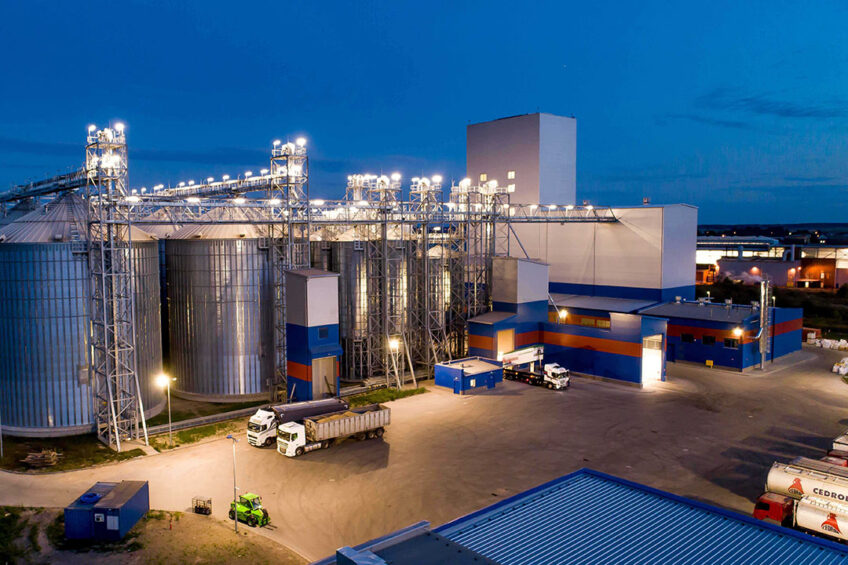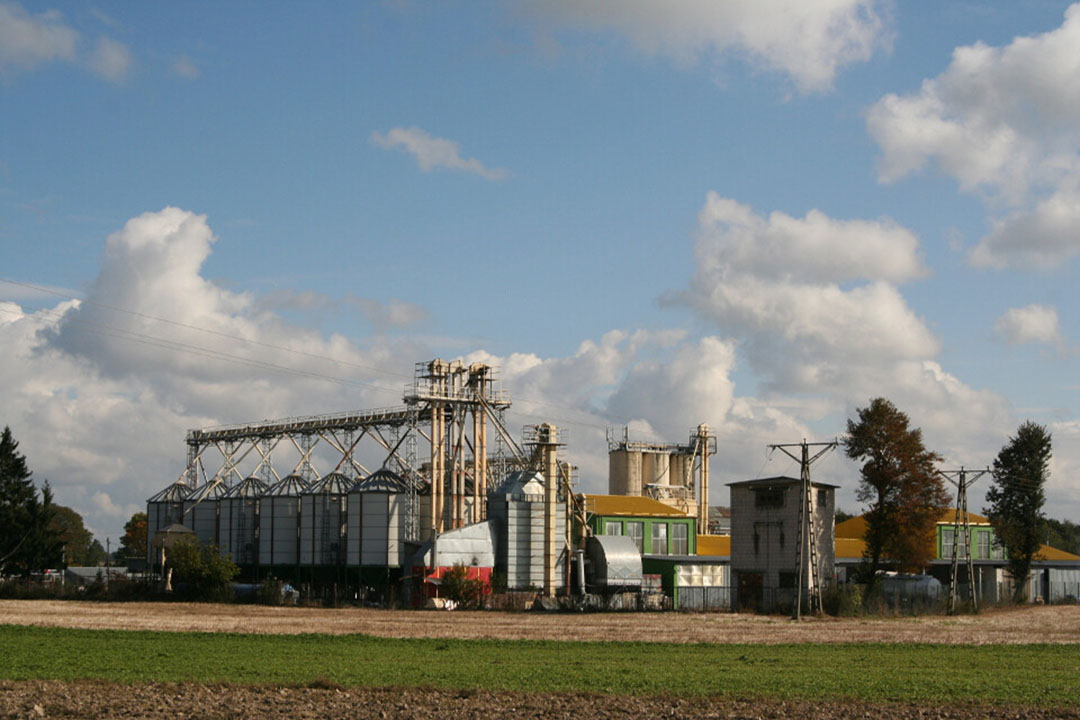Polish feed industry on a roller coaster ride

Poland’s feed sector weighs up various plans for reaching protein independence while dealing with multiple challenges, including quality scandals, the inflow of cheap Ukrainian grain and uncertainty around poultry exports.
Poland was one of a few European Union (EU) countries that saw a feed production shift in 2022. EU compound feed production last year totalled 148.9 million tonnes, 3.8% lower than in 2021, and aside from Poland, only Austria, Finland, Ireland and Slovakia could claim that they did not suffer a decline in production.
Polish farmers increased their purchases of purebred piglets in Germany, Denmark and the Netherlands to such an extent that piglet prices in Europe doubled
UkgAgroConsult
Why did Poland outperform most EU stats?
There is no consensus on what helped Poland to outperform most other European countries in terms of feed production, but some market players believe that cheap Ukrainian grain played a decisive role. The Ukrainian think tank, UkgAgroConsult, for instance, reported that Poland experienced a rebound in meat and poultry production in 2022, all thanks to Ukrainian wheat and maize, which were flowing into the country at prices 30% to 40% below the global average.
“Polish farmers increased their purchases of purebred piglets in Germany, Denmark and the Netherlands to such an extent that piglet prices in Europe doubled,” UkgAgroConsult said, adding that the country also managed to fortify its position as the largest European broiler meat exporter. Cheap Ukrainian grain increased the competitiveness of Polish meat, so producers enjoyed outstanding success in other European markets, the think tank reported.
Over the past year, the inflow of cheap grain from Ukraine was the subject of fierce debate in Poland. It is estimated that 4 million tonnes of grain from Ukraine entered the country by land between July 2022 and March 2023.

Technical grain: Ploy to avoid border controls?
Still, it would be wrong to say that cheap Ukrainian grain is welcomed as ‘manna from heaven’ in Poland. Quite the opposite, since November 2022, Polish farmers started raising the alarm about irregularities associated with grain imports from Ukraine. As it turned out much of that grain was described in customs declarations as ‘technical’.
The Polish newspaper Wiadomosci explained that this definition was nothing more than a trick designed to speed up the flow of imports, as technical grain is not intended to be used in food or feed production, so its import is not subject to mandatory border controls by the Sanitary Inspection and Main Veterinary Inspection.
There is no such thing as technical grain. Someone introduced this concept because it [technical grain] does not have to meet any quality requirements
Dr Arkadiusz Artyszak, prof. SGGW, head of the Department of Agronomy.
Wiesław Gryń, a farmer from the Fraudulent Wieś Association, stated that cheap Ukrainian grain was involved in major fraud schemes last year. He explained: “The problem is that this grain was supposed to be in transit through Poland, but it stayed with us. We have evidence that Ukraine carriers had several bills of lading for what they were carrying – they showed some at the border, others at the purchase point.”
Several Polish unions warned that much of the technical grain, including some intended for transit, is used to manufacture feed and food in Poland. Such practices, local farmers warned, cast a shadow on the quality of Polish livestock products and, under certain conditions, could put export prospects in peril.
Feed quality concerns
In April 2023, the District Prosecutor’s Office in Zamość discovered that at least 3 mills purchased wheat declared as Polish, which, during the investigation was found to be Ukrainian, imported as technical. A spokesperson for one affected company, which wished to remain anonymous, told the local publication RP that the grain successfully passed all tests and was not contaminated with pesticides, mycotoxins or other harmful substances, but the company still refrained from using it.
All in all, it was discovered that 66 tonnes of Ukrainian grain, claimed to be technical, was sold to feed mills over the previous several months in Lublin Voivode alone. This figure is likely to be much larger nationwide.
The doubts about feed quality might be especially relevant in light of another scandal which shook the Polish feed industry in 2022. In October, Polish law enforcement agencies discovered that Polish farmers unintentionally fed poultry with technical oils meant for use in the production of greases, lubricants, and biofuels.

New inspection regulations implemented
In December 2022, Polish Agricultural Minister Henryk Kowalczyk ensured that under a new system, all grain was subjected to mandatory inspections at the border. These inspections put an end to speculations about feed quality, but did little to curb imports and, since April, Poland, along with several other European countries, resorted to restrictions on Ukraine grain supplies.
The restrictions, welcomed by grain farmers, however, made feed companies furious, and not only in Poland. The Hungarian Cereals and Feed Association, for example, claimed: “We disagree with the ban on imports of Ukrainian grains and oilseeds, especially during the season when our dependence on maize imports is exceptionally high. This decision will lead to big problems for Hungarian feed manufacturers and industrial companies, affecting livestock companies and consumers.”
Protein sovereignty is a priority
The current situation in the Polish feed industry also raises questions about long-term industry development. On 1 January 2025, a ban on the use of GMOs in feed is due to come into force in Poland. This step has been under discussion in the country since 2006, but has been delayed several times due to pressure from livestock associations.
One of the rationales behind barring Ukraine grain imports was that they could bury initiatives aimed at ramping up domestic protein crop production, including the COBORU Protein Initiative, under which the government subsidises farmers who increase local feed crop production, by ramping up output of rapeseed meal, legume meal and other feedstuffs.
“Protein sovereignty is a strategic goal associated with strengthening our food security, but the use of components produced in Poland in feed means that money stays in Poland,” explained Marek Zagórski, former Minister of Digitisation and currently a member of the Polish Parliament.
“By buying, for example, soybean meal, a significant part of this added value goes to farmers in Argentina, Brazil and the USA. In meat production, we should use as much of our own feed components as possible,” he said, explaining the motivation behind the initiative.
Poland wants to boost the domestic production of legumes to replace soybean meals while ensuring that this does not entail any negative consequences for the profitability of farmers and feed mills.
“If the free market does not deliver results, there must be sufficiently high subsidies for the cultivation of protein crops. Such payments are included in the National Strategic Plan at the level of € 200/ha, but it is also important that they are not reduced if the area cultivated in the country increases. This fee should be permanent and support those farmers who engage in the cultivation of protein crops for many years,” Zagórski added.
“The National Association of rapeseed and protein crops producers, together with the Polish association of oil producers, has recently conducted a series of training sessions, where we showed that in breeding pigs and cattle rapeseed meal can be used without a loss of production,” Juliusz Młodycki, a spokesperson for the Polish Coalition of Biofuels and Protein Feed said.
“Of course, there is still the issue of poultry farming, which is very reluctant to use locally grown protein. But the studies to which we have access, and the poultry community also know about, claim that for certain groups of animals, in the final fattening period, rapeseed meal or components from high-protein plants can be fed without any loss of production,” Młodycki said.
The government estimated that it is possible to replace 20% to 30% of soybean meal in feed production with domestic feedstuffs such as fava bean seeds. This decision would allow the country to avoid imports of 1 to 1.5 million tonnes of soybean meal, and get closer to finally restricting the use of GMOs in feed production.
Factors in play
The middle-term outlook for the Polish feed industry, however, remains vague. This year, production could be impacted by a series of factors, including uncertainty about the state of domestic demand and poultry exports.
Poland is expected to see a 1.5% rise in poultry meat production in 2023 as the market situation has noticeably improved in the past months, the Agricultural Ministry said in a recent statement. In 2022, Poland produced nearly 3 million tonnes of poultry, which is 8.2% up compared with the previous year. More than half of that quantity was exported, the Ministry said.
The rise in exports is anticipated against the background of a relatively favourable situation concerning the bird flu epidemic in the country. In turn, domestic demand is bolstered by millions of Ukrainian refugees who have remained in Poland since the first half of 2022.
However, as Poland has recently cut funding for Ukrainian refugees by half, domestic demand could drop. In the meantime, the bird flu epidemic worldwide also seems to be gaining momentum. The World Organisation for Animal Health says there has been “an unprecedented number of outbreaks” of bird flu reported in regions across the world since the current epidemic began. Given its dependence on poultry exports, Poland needs to avoid bird flu to preserve stability in its feed industry this year.







